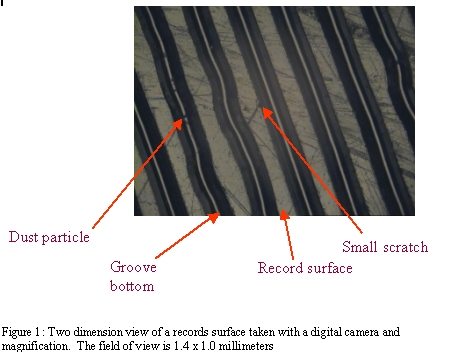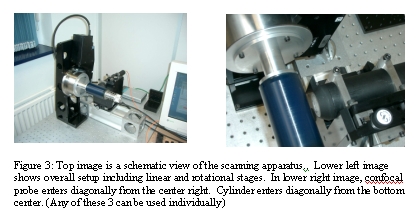Carl Haber - CHHaber@lbl.gov
Vitaliy Fadeyev, Zachary Radding. Christian Maul, John W. McBride, Mitch Golden
MS 50B-5239 Lawrence Berkeley National Lab
Berkeley, California, 94720
Popular version of paper 2pMU4
Presented Tuesday afternoon, May 25, 2004
147th ASA Meeting, New York, NY
Sound reproduction dates to Edison’s great invention of 1877. Since that time many different media have been used to hold recordings. Large collections of historical recordings exist in the major archives such as at the Library of Congress, the British Library in London, and the New York Public Library.
The archives face at least two major challenges. Some of the recordings in their collections are delicate, damaged, or even broken. Can these be preserved or recovered? Given the scale of the major collections, even for recordings in good condition, can the archives find an efficient way to digitize them all and create easy access for the public through, for example, the Internet?
Many of the historical recordings are mechanical. The sound is stored in the undulations of grooves in the surface of either a disc or a cylinder.
For mechanical recordings, the answer to both these challenges might lay in the use of modern digital imaging methods to measure in detail the shapes of the grooves and in the use of physical models, a “virtual stylus,” to relate the groove shapes to the sound. Images of a surface can be captured without direct contact. In this way no further damage need occur.
With a digital image, certain types of damage or contamination can be compensated for, as in the re-touching of a photograph. In principle a scratch can be removed and a broken record could be re-assembled in this way.
In the mass digitization of large collections, such an approach may require less operator intervention. Usually an operator must clean and queue the recording, select a stylus, and monitor for skips. If recordings are imaged, these tasks are basically handled by software which could be automated.
For an imaging approach to work, methods with sufficient resolution to measure the minute undulations of a recording’s surface must be used. The scale is a fraction of a micrometer (or micron), where a thousand microns is a millimeter. Various optical methods in use now for laboratory work, inspection of semiconductor and optical components, and in biology have the required resolution.
The unwound length of a groove from a 10” diameter 78 r.p.m. record is
150 meters, thus detailed information is required from a rather large object.
Fortunately the data processing and storage capabilities of modern computers
are sufficient for the task. To test these imaging methods on mechanical recordings
we have applied two approaches. Using a commercial automated optical inspection
machine, we created a process whereby some portion of a disc recording was imaged
and analysed.
 |
Figure 1 shows one of many thousands of images acquired in such a process. The groove undulations, as seen in the figure, were measured from the digital images and the separate views were pieced together to recreate a sound passage. Dirt and damage were removed from the images as they were recognizable to an algorithm as being shaped differently than the groove. The resultant waveform was converted to a standard sound file format.
The results were encouraging as can be heard from these two sound clips. The
first is from a stylus playback
of the material while the second
is with the optical method. A custom-made scanning system was configured to
read the full three-dimensional data from the surface of an Edison cylinder.
The scanning was made with a confocal probe which is an optical technique capable
of measuring heights to better than 0.1 microns. A small region of the cylinder
imaged by the confocal probe is shown in Figure 2. The scanner is shown in Figure
3.
 |
 |
 |
The audible results are presented in sound clips first from a stylus version and second from the optical method. The Edison cylinders were recorded purely with acoustic methods since electronic amplifiers and magnetic cutters and cartridges did not exist. The basic understanding of the physical acoustics of the elements used in recorders, the horns and diaphragms, was poor at that time.
Our analysis also suggests that some further improvement to the played-back fidelity could be achieved by compensating for some of the poor properties of the components used in the early acoustic recording period.
Besides the potential for recovery of delicate or damaged samples and efficient digitization, there are additional advantages of an imaging approach. Imaging methods may be applied to any medium upon which the recording is made, including vinyl, shellac, wax, metals, and other opaque or transparent plastics. Some recordings may only exist in the form of metal “stampers” (reverse of a grooved imprint).
While there are methods to playback some of these, using a special stylus, playback through imaging methods is no more difficult than groove imaging. Various sources of distortion and noise such as wow and flutter, tracing error, pinch effects, and tracking errors, are either absent in this approach, or can be resolved as geometrical corrections in the analysis. The optical scanning methods discussed in this paper could be developed further and perhaps result in a real tool that the archives could use in their efforts to restore, preserve, and create access to, their collections.